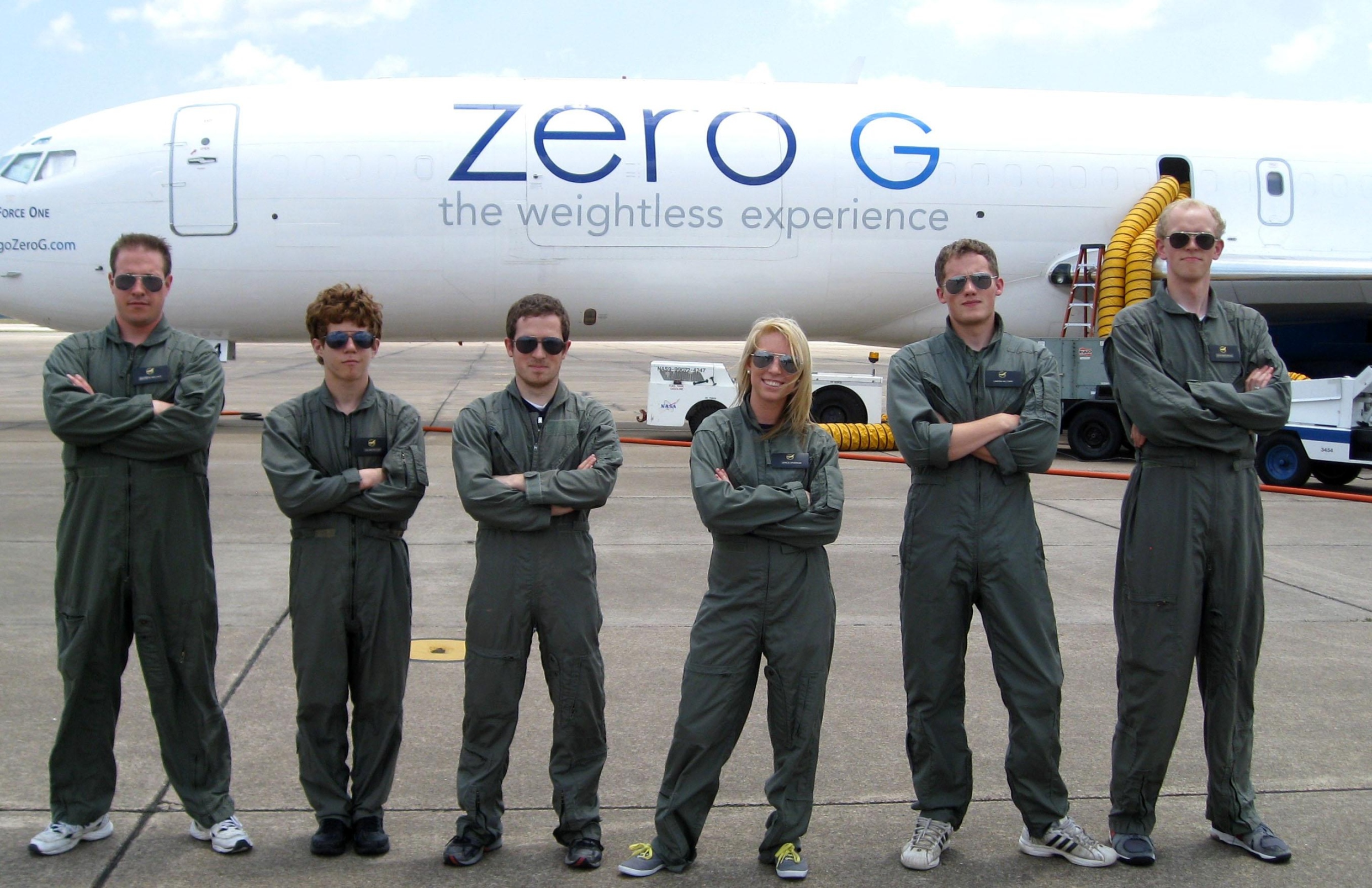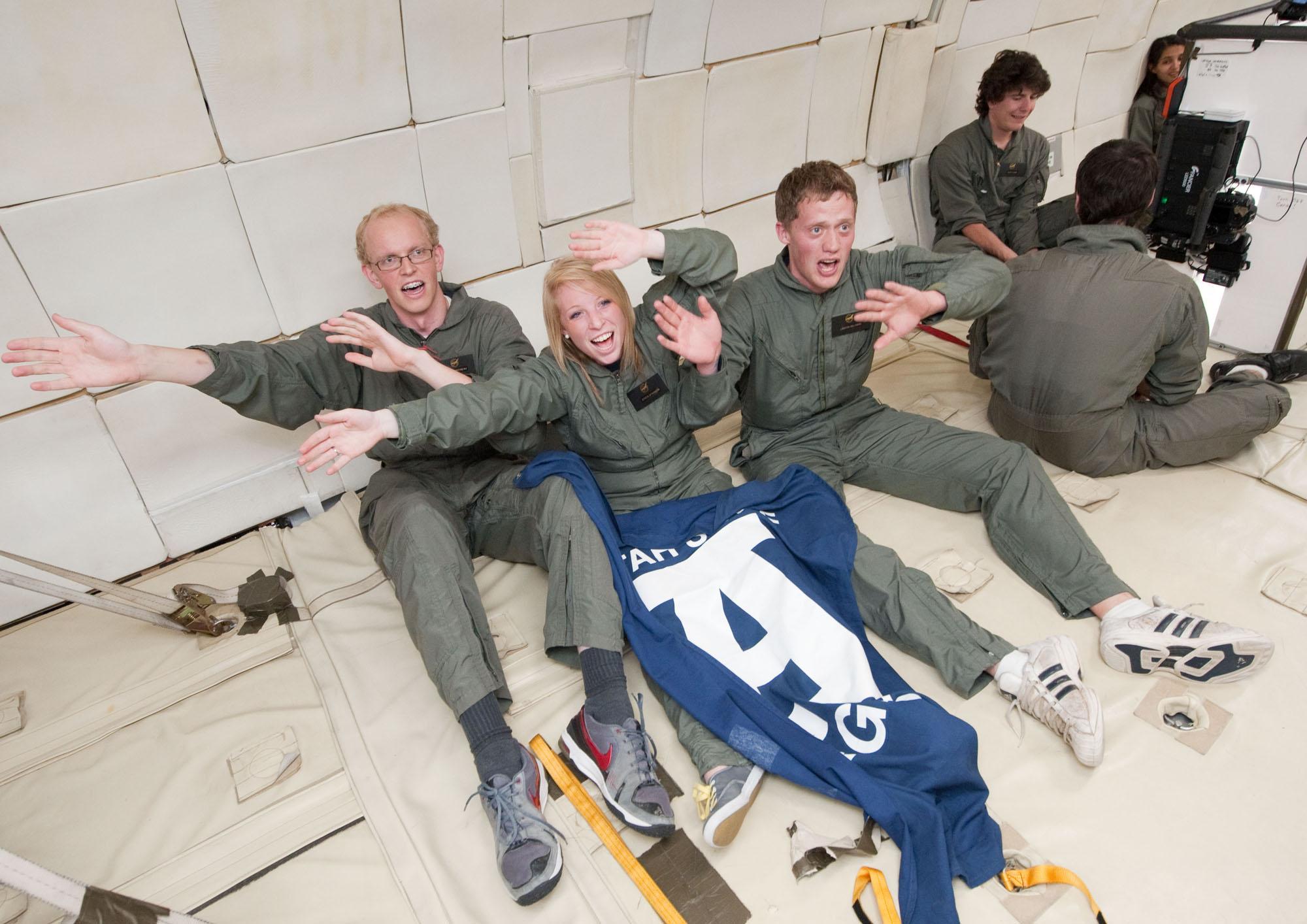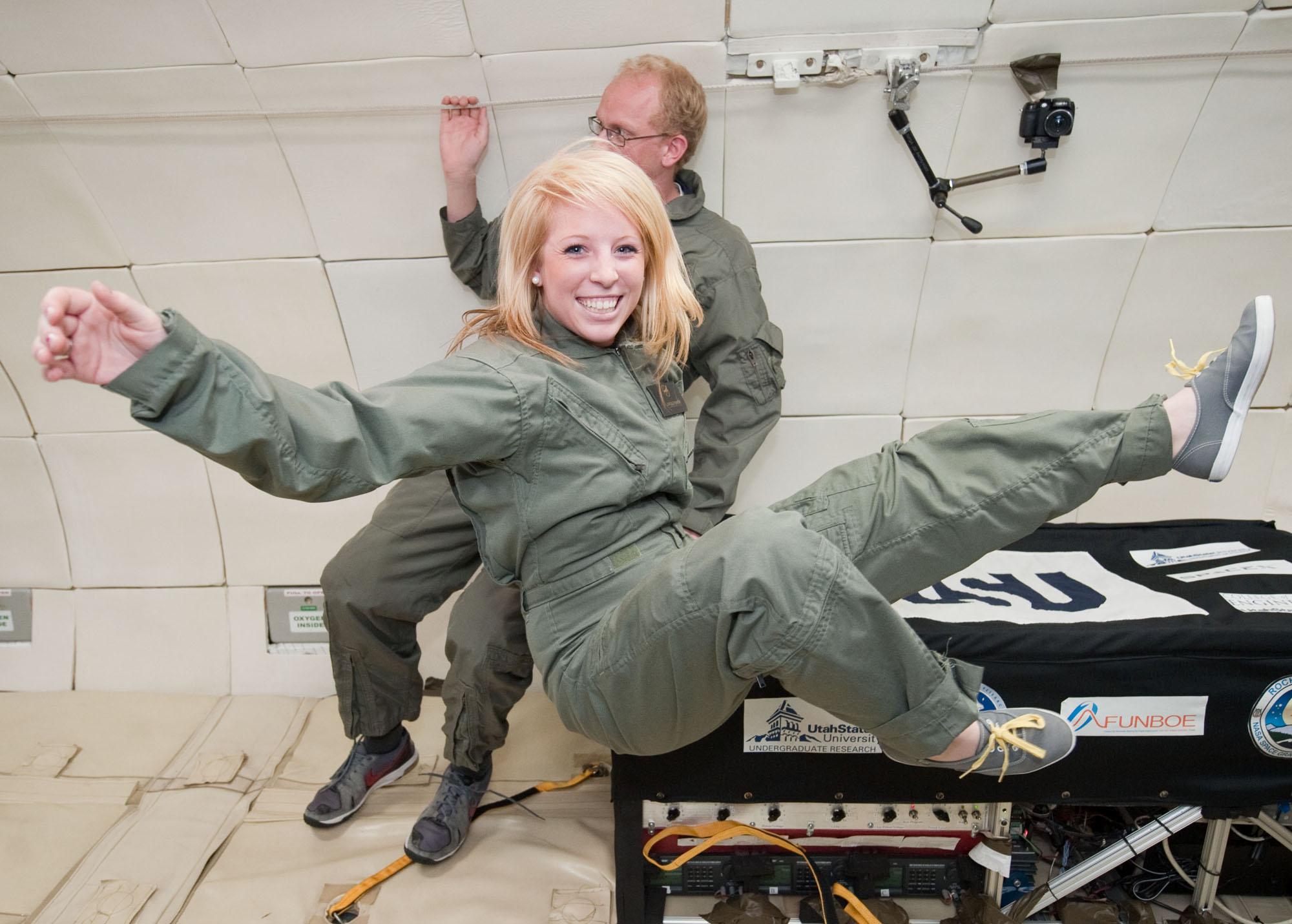Utah State University Experiences Zero Gravity
The plane dropped from under the passengers and nose-dived at a 45-degree angle. In the midst of a free fall, passengers felt zero-gravity and merely floated in awe.
A group of Utah State University engineers were among those passengers who recently experienced microgravity when conducting an experiment aboard NASA’s aircraft.
“I remember the first parabola just felt like a mix of ‘Huh?’ and “Whoa!'” said Ryan Martineau, a sophomore at USU. “To me, it just felt like for the first time in my life I was free from a constraint that I didn’t know I could live without.”
The group of USU engineers, formally known as the Get Away Special team, was invited aboard The Weightless Wonder to carry out research. The Weightless Wonder is a plane that moves in parabolic paths about 32 times to create reduced gravity.
Stationed at the Johnson Space Center in Houston, Texas, The Reduced Gravity Education Flight Program is NASA’s way of showing students how they can apply their knowledge to a hands-on experiment. It offers a nationwide opportunity for students to become familiar with the challenges faced within the microgravity environment.
The Reduced Gravity Education Flight Program was founded in 1995 by aircraft operations manager, George Abby. It was created to mirror similar European space agencies’ programs. Colleges and universities from 49 of 50 states—Delaware would be the 50— as well as the District of Columbia and Puerto Rico have participated in the flight program and experienced zero gravity.
Sara Malloy, Lead Program coordinator for the Reduced Gravity Education Flight Program said, “When you sit in a classroom and read a book, that is a good knowledge base but that doesn’t give you a real world experience.” RGEFP offers just that.
“I need to be able to do the steps, rather than someone just telling me how and expect me to know what I am doing,” said Jenica Sparrow, a freshman on the GAS team since fall of 2010. RGEFP provided “opportunities to apply the methods and formulas I am learning in the classroom to an actual situation.”
Out of 65 proposals submitted last fall, only 14 were chosen to perform experiments at JSC in Houston, Texas. Along with schools like Purdue, Yale and Cal-Tech, USU’s GAS team rose to the challenge.
Established in 1976 by R. Gilbert Moore, the GAS team is responsible for making USU the university that has sent more student-built experiments into space than any other university in the world.
This year’s seven members that traveled to JSC on June 1 are Troy Munro, Landon Hillyard, Jenica Sparrow, Matt Wallace, Ryan Martineau, Iggy Matheson and Rob Barnett.
Their ongoing project is called the Follow-Up Nucleate Boiling On-Flight Experiment or FUNBOE 2.0., an $8,000 project. It is a follow-up study to a project conveyed in 2001 and the first FUNBOE that was flown last year.
“Basically the experiment looks at some of the fundamental parts of a system that affect boiling water in microgravity on thin wires and our little 2D chips,” said Troy Munro, senior mechanical engineer and team leader. “The main goal is to transfer heat with boiling.”
It is vital to test in Zero-G because it would produce more accurate research in comparison to conducting research on the ground. “Gravity is a factor in boiling—hot bubbles go up, cool water goes down— and so testing without it makes the data we collect relevant to space application, where gravity is not a factor,” said Ryan.
The need for a more cost-effective and reliable thermal management systems are on the rise if mankind wishes to continue space exploration and this research will enhance the ability of scientists and engineers to design those systems applied in space.
“Our results can be used in future space flight and exploration,” said Jenica. “Nucleate boiling is a very interesting concept and could become really important to living in space. We are doing something that will actually make a difference.”
“If FUNBOE is tested successfully, future technology could be improved significantly,” said Ryan.
There have not been any other universities working on this kind of experiment. The only other similar efforts were contributed by a few scientists in China.
“FUNBOE is a very ambitious experiment” said Ryan. “It is carried out primarily by undergraduate students. It contains ideas that have not been specifically tested or tried. We’re not just verifying we’re trying something new to see if it can help improve current heat transfer models and designs.”
For a complex experiment, it was an incredible success. “We have enough data to keep us busy analyzing it for months, and we have the satisfaction that the setup design fulfilled its purpose to decrease needed motion between test cycles,” said Ryan.
“We have only had opportunity to review small portions of the 13 hours of video and generated graphs, and so far we can’t say we’re sure about whether we got what we needed. We’ll be in good shape for that at the end of the summer.”

At the so-called Weightless Wonder

The USU group does “The Scotsman” before “lifting off.”

